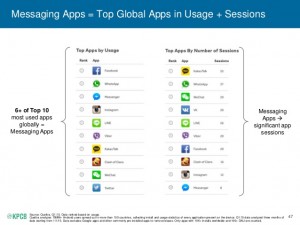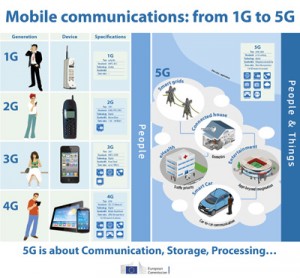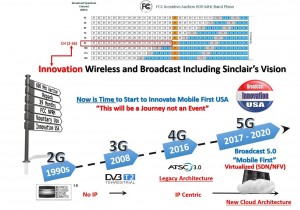DAS Small Cell densification on utility poles. DAS versus Small Cells
OTT Video to mobile devices creates more demand for the general category “Tower Space”. Tower or mini tower or DAS space with fiber backhaul has the most value.
2 way IP connectivity from existing broadcast TV and radio towers?
Existing broadcast towers are being converted from 1 way broadcast towers to 2 way full digital connectivity “cell towers”. Many urban AM and FM radio stations own towers that are worth more than the station.
Relationship between cell phone “coverage” – how many bars? compared to “capacity”.
Capacity means what download speed can a group of consumers get from the same tower? from the same antenna sector
How many consumers (users) can stream a HD video in the same 60 degree sector antennae? Use a real Example Streaming 4K video to Steeler van? 4K IPTV video from broadcast TV towers- OTA (over the air VHF and UHF broadcast TV), could replace outdoor Wifi? 3.5GHZ unlicensed spectrum moving to 4G and 5G LTE
Spectrum and protocol are tech issues for techie people
Steeler fans don’t care about spectrum or protocol connectivity for IPTV inside this van. Steeler fans DO care about a full 4K HDTV perfect picture with no pauses or pixelation on curved screen TV. Steeler fans need this to work while van is moving?
 Wireless industry’s wants collocation and shared infrastructure, but carriers apply for individual small cells instead of shared infrastructure like DAS.
Wireless industry’s wants collocation and shared infrastructure, but carriers apply for individual small cells instead of shared infrastructure like DAS.
Poles with small cells contained within or Distributed Antenna Systems (DAS) nodes with an off-site equipment hub. Carriers or small cell companies submit the actual drawings but the installations do not look anything like the pictures., install the attractive poles,add extra stuff and bloat the view.
How a small cell can be expanded into a mini cell tower.
In expensive markets even with incriminating reviews, small cell deployment still occurs. Wireless companies still build towers or even find private locations for rooftop cell sites.
The industry labels any request for cost reimbursement or rents by a municipality as a “money grab” revenue sharing some poles worth more.
Without standardization by the industry, these applications can’t be reviewed easily. This increases the cost to the municipality for reviewing such applications.
the proliferation of poorly designed small cells can also degrade historic districts and draw noise complaints from neighbors when a carrier with loud cooling fans is mounted on a pole a few feet from a bedroom window.
Replace with Quiet cooling fans? or no fans
wide-ranging benefits of the Internet of Things (IOT), smart cities, and self-driving cars, many of these benefits can be obtained using current LTE-based technologies. Which ones?
there are absolutely many wide-ranging benefits from 5G and small cell densification. Truly mobile IOT won’t happen without wireless industry investment.
No other private or public entity can or will develop sufficient wireless infrastructure in the US to enable pervasive low latency communications. Without wireless industry investment, remote control of sensitive machinery or vehicles simply won’t occur.
Self-driving autonomous cars will be possible but without the gains in safety and efficiency that would occur from a truly smart network of connected cars.
Benefits of low bandwidth, non-essential IOT or smart city sensors and functions without small cells at all (or at least with fewer of them).
traffic management systems, public transportation location-based tracking, real-time public parking information, and gun-shot recognition.
These are all benefits to be gained from IOT.
distinguish which smart city and IOT initiatives require wireless industry involvement and which don’t.
studies don’t even remotely acknowledge which IOT benefits can happen on today’s LTE networks versus those that need densification.
wireless industry claims densification of small cells is needed to enable smart city and IOT functions, they don’t tell you that mobile video is the primary use of small cells both now and in the future.
video currently makes up 60% of mobile data traffic.
Cisco states further that 50 billion IOT devices will be connected to the internet within 5 years. However, only 1.5 billion of these devices will have cellular connectivity. We have seen forecasts from other sources that IOT mobile data use will grow to 8% of total network mobile data use by 2021. In other words, IOT functionality only drives less than 10% of the bandwidth need for small cell densification.
how many small cells are necessary to enable Smart City and IOT initiatives versus how many are really needed to densify networks for the next generation of fixed wireless to home and mobile video?
mobile and fixed wireless video is so important to AT&T and Verizon,
mobile video or fixed wireless are NOT inconsequential. Without the revenue generated from mobile and fixed wireless video, the wireless industry would not have the incentive to invest as much Capex in their wireless networks to enable some of the truly amazing IOT and smart city use cases – especially those that require low latency or secure and ultra-reliable communication.
5G and small cell densification is primarily about IOT and smart city functions is a half-truth at best. The reality is that small cells densification is more about paid consumer and commercial video than it is about IOT or smart cities.
responded to the city’s questions. responses were cop-outs – claims that they couldn’t answer due to competitive concerns.
wireless industry wanted to poke holes in the city’s effort, but was unwilling to answer important questions that would have helped the city review and revise its own policy.
How can any city reasonably be expected to plan and prepare adequately for small cell infrastructure when the wireless industry continues to provide limited substantive information?
Municipalities need to realize that wireless investment in small cells should be encouraged and reasonably managed and that doing so requires investment in staff and resources.
Cities can no longer put their heads in the sand because it isn’t a question of if, but of when and of how many small cells are coming. Reactionary policies and moratoriums almost always rushed and neither encourage thoughtful technological expansion nor protect the constituents.
Wireless carriers, tower companies, and industry associations need to provide better substantive guidance to their member constituents including model applications and construction/design criteria.
They should truly encourage shared infrastructure use especially in dense areas where multiple providers want access to existing poles. These groups and companies should also be more forthright in their marketing materials and in answering legitimate questions and concerns by public entities.
advisors to landowners and municipalities, will continue to help educate the public about the small cell leases and policies. Most landowners and municipalities are underrepresented and ill-informed when it comes to responding to the wireless industry’s requests.


